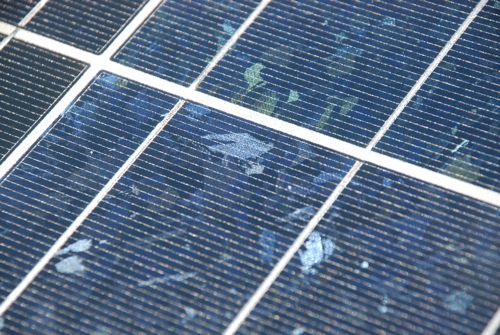[An updated treatment of some of this material appears in Chapter 13 of the Energy and Human Ambitions on a Finite Planet (free) textbook.]
A common question I get when discussing solar photovoltaic (PV) power is: “What is the typical efficiency for panels now?” When I answer that mass-market polycrystalline panels are typically about 15–16%, I often see the questioner’s nose wrinkle, followed by dismissive mumbling that 15% is still too low, and maybe they’ll wait for higher numbers before personally pursuing solar. By the end of this post, you will understand why this response is annoying to me. At 15%, we’re in great shape: it’s plenty good for our needs. Let’s do the math and fight the snobbery.

A close-up of a polycrystalline photovoltaic (PV) cell, showing blue tint and a patchwork of crystal domains.
First, let’s look at the efficiencies of other familiar uses of energy to put PV into perspective. I will act as if I’m directly addressing the PV efficiency snob, because it’s fun—and I would never be this rude in person. This may not apply to you, the reader, so please take the truculent tone in stride.
Continue reading →
Views: 17357
 You may have heard about the excess carbon dioxide in the atmosphere as a result of our combustion of fossil fuels. If we wanted to sweep the excess CO2 out of the air, what would it take? How much is there? Where would we put it? In this post, we will put the numbers in perspective and briefly examine a few of the possibilities for storage.
You may have heard about the excess carbon dioxide in the atmosphere as a result of our combustion of fossil fuels. If we wanted to sweep the excess CO2 out of the air, what would it take? How much is there? Where would we put it? In this post, we will put the numbers in perspective and briefly examine a few of the possibilities for storage.
